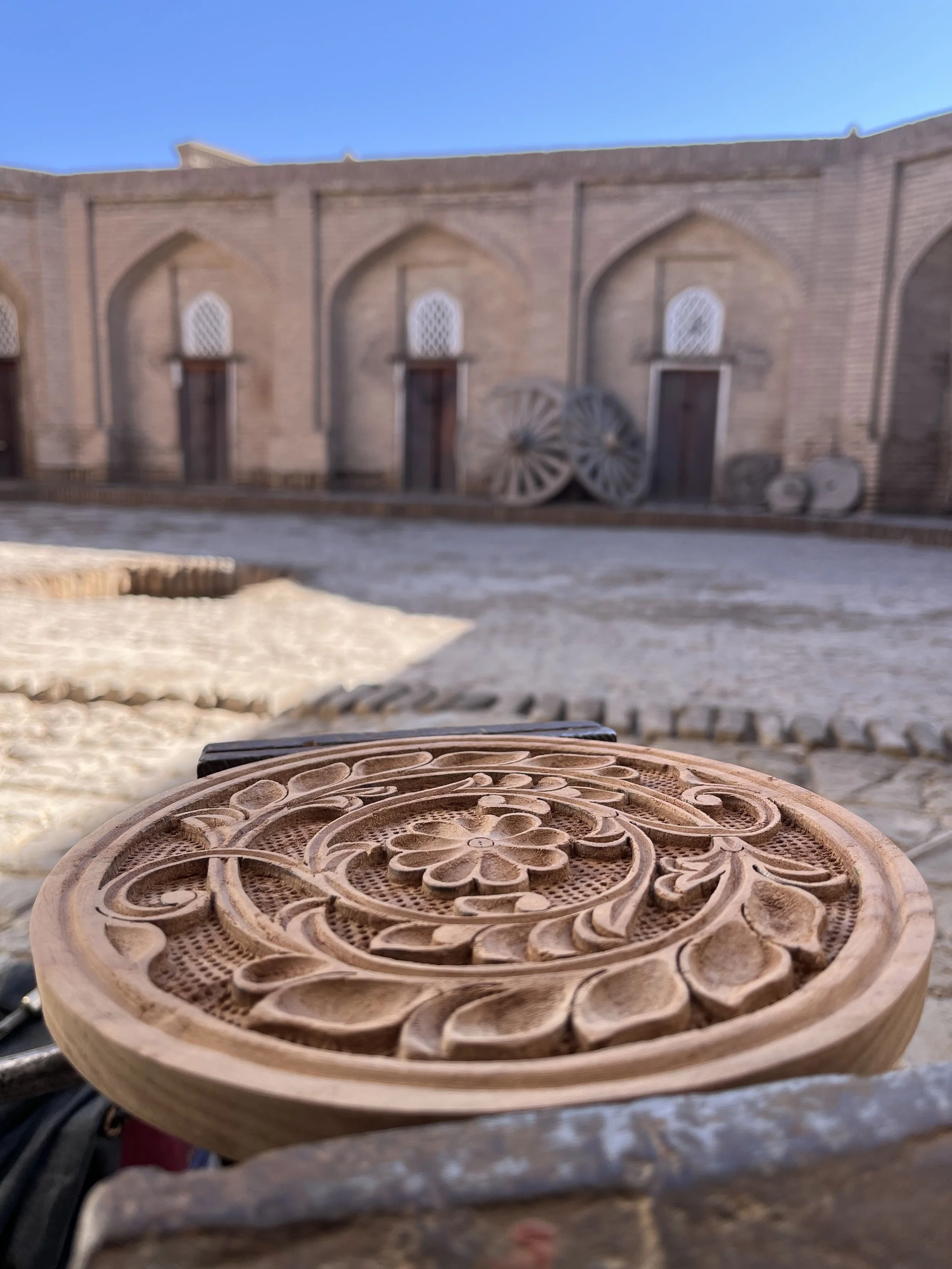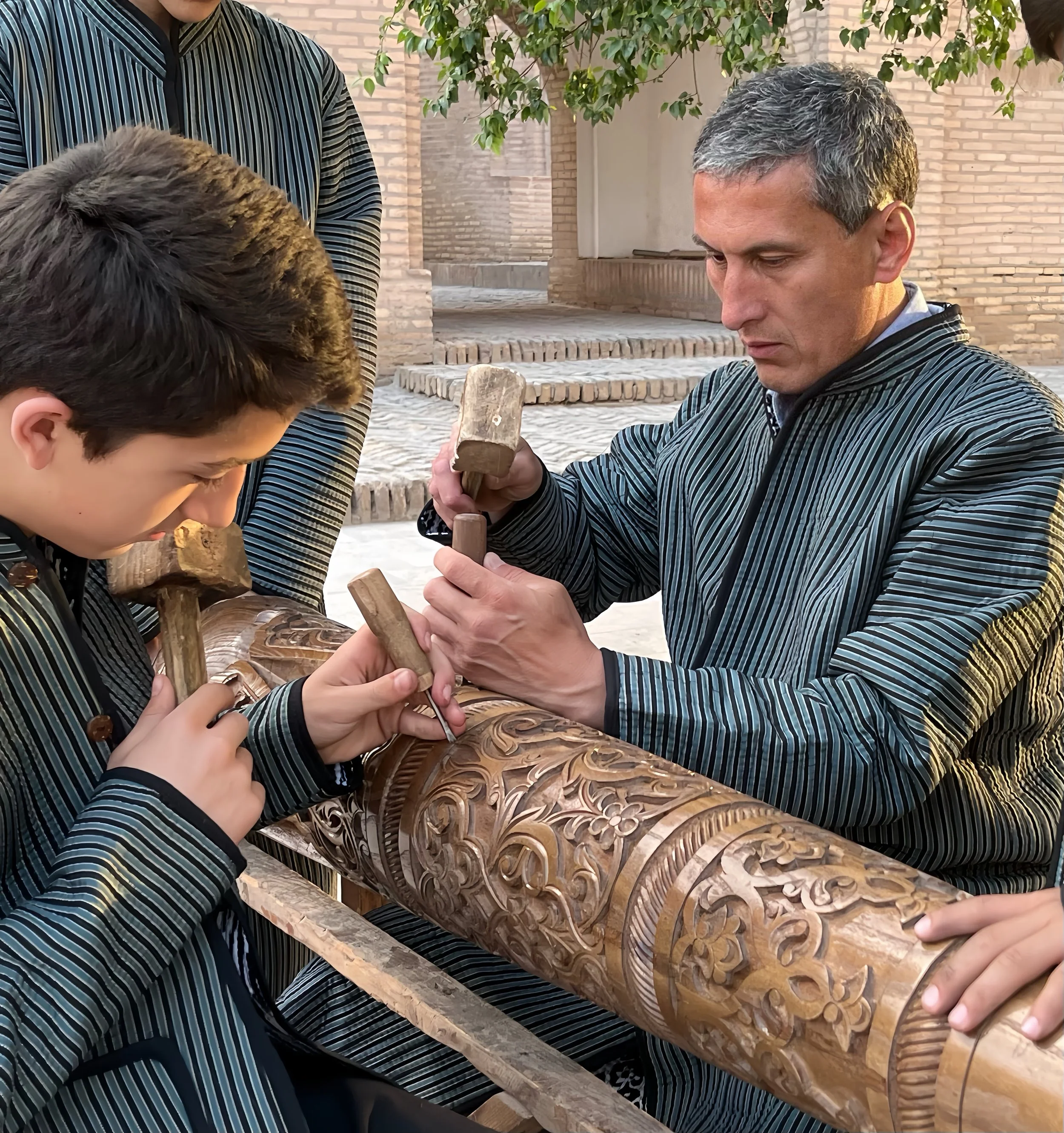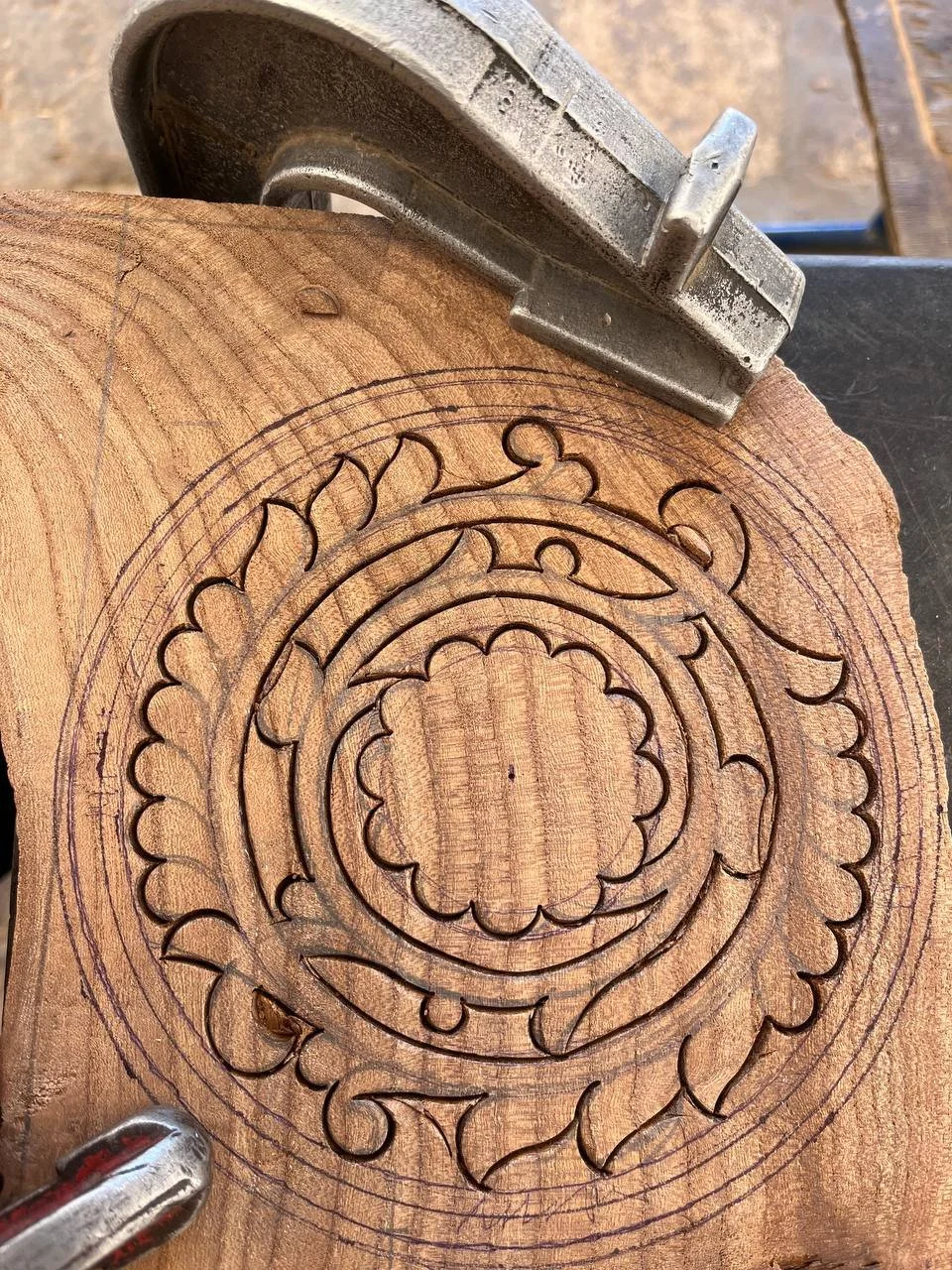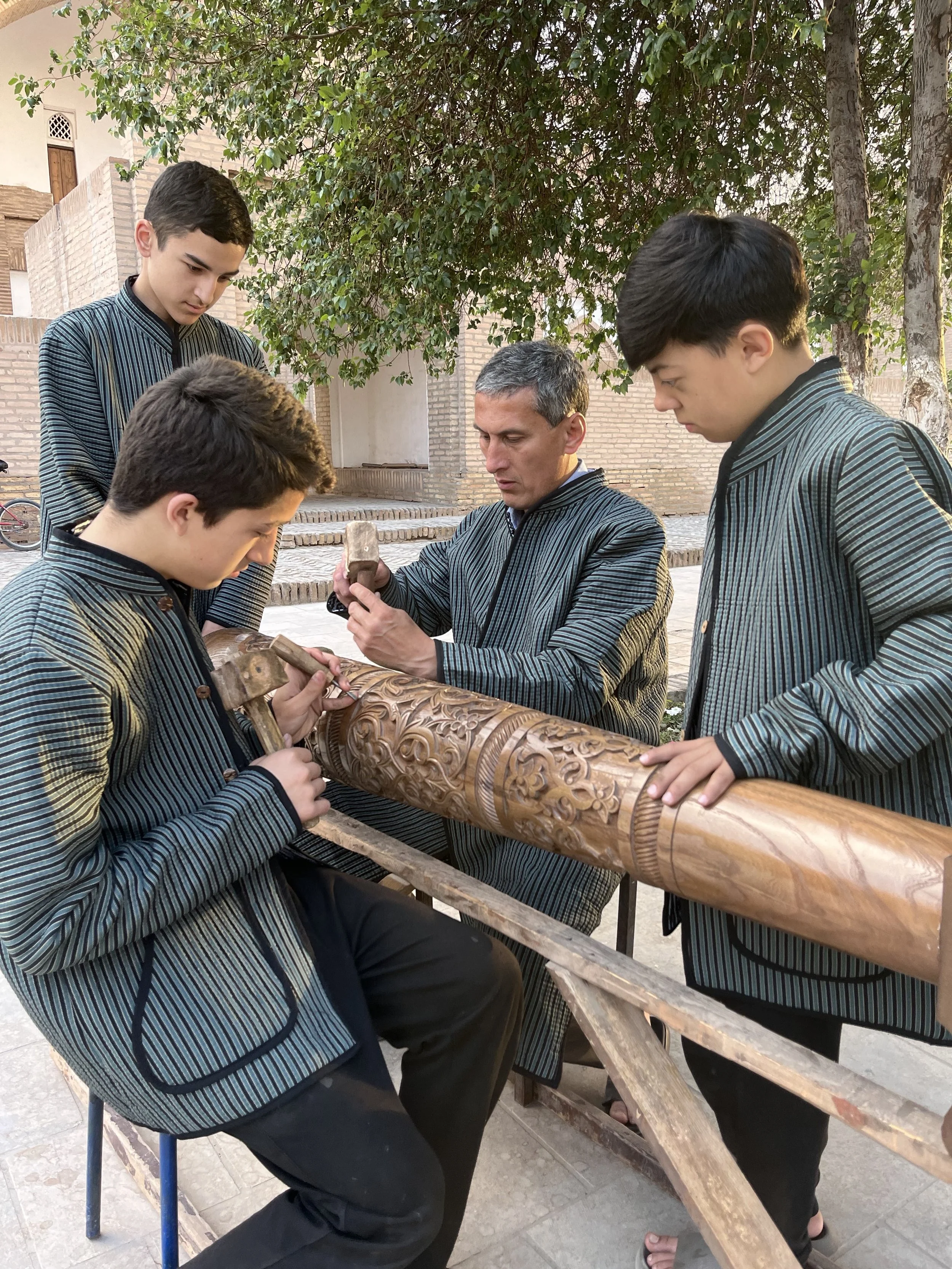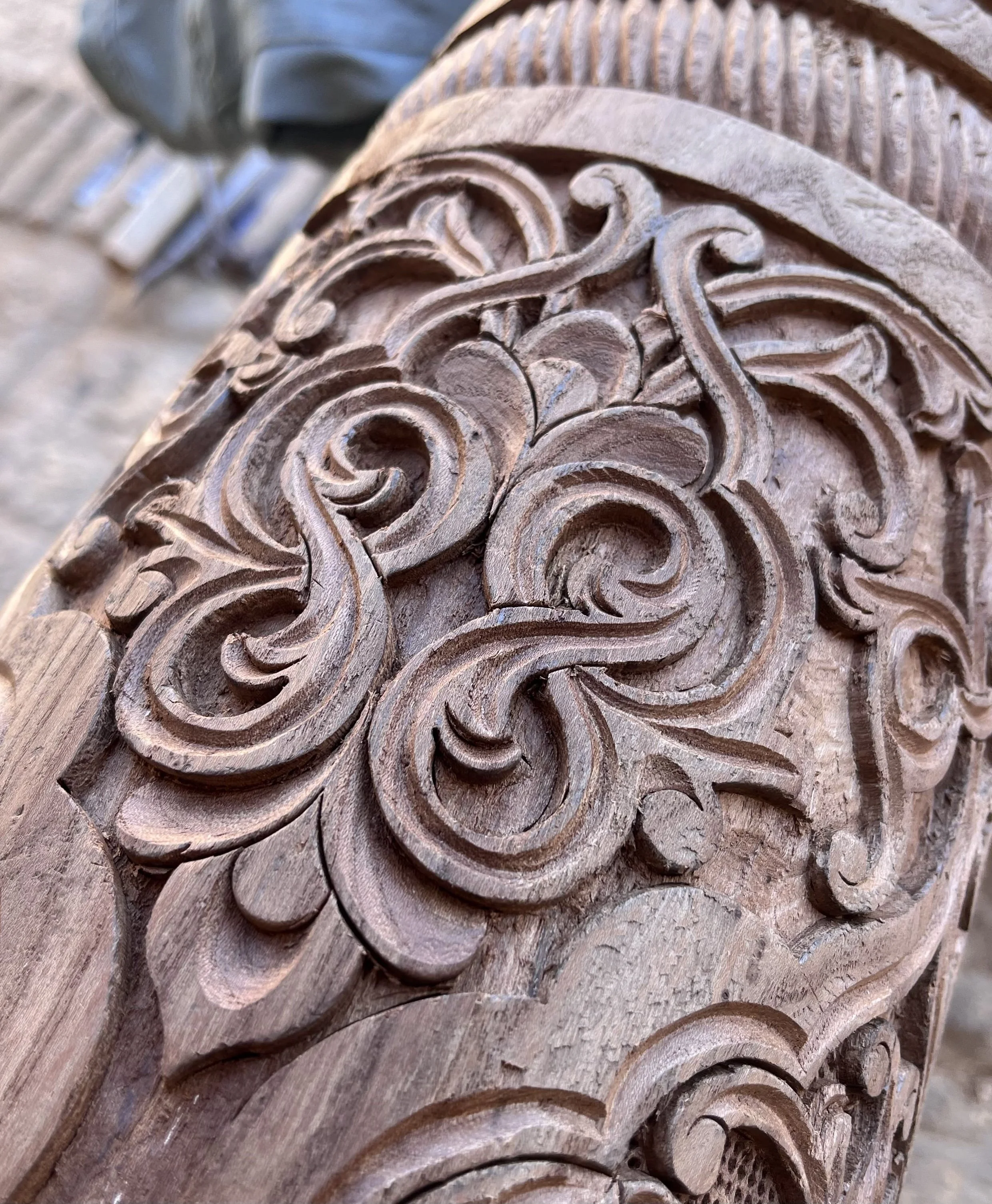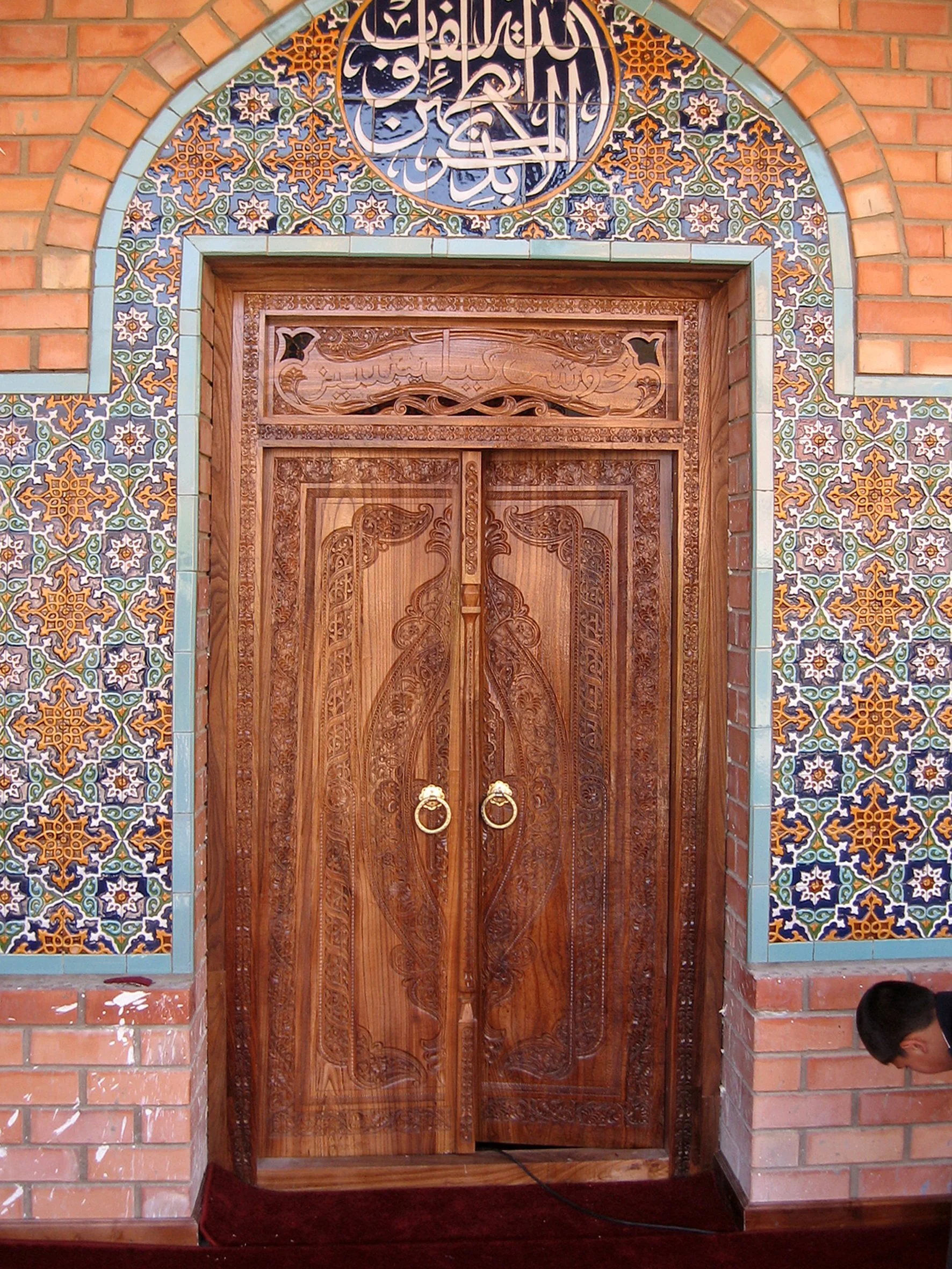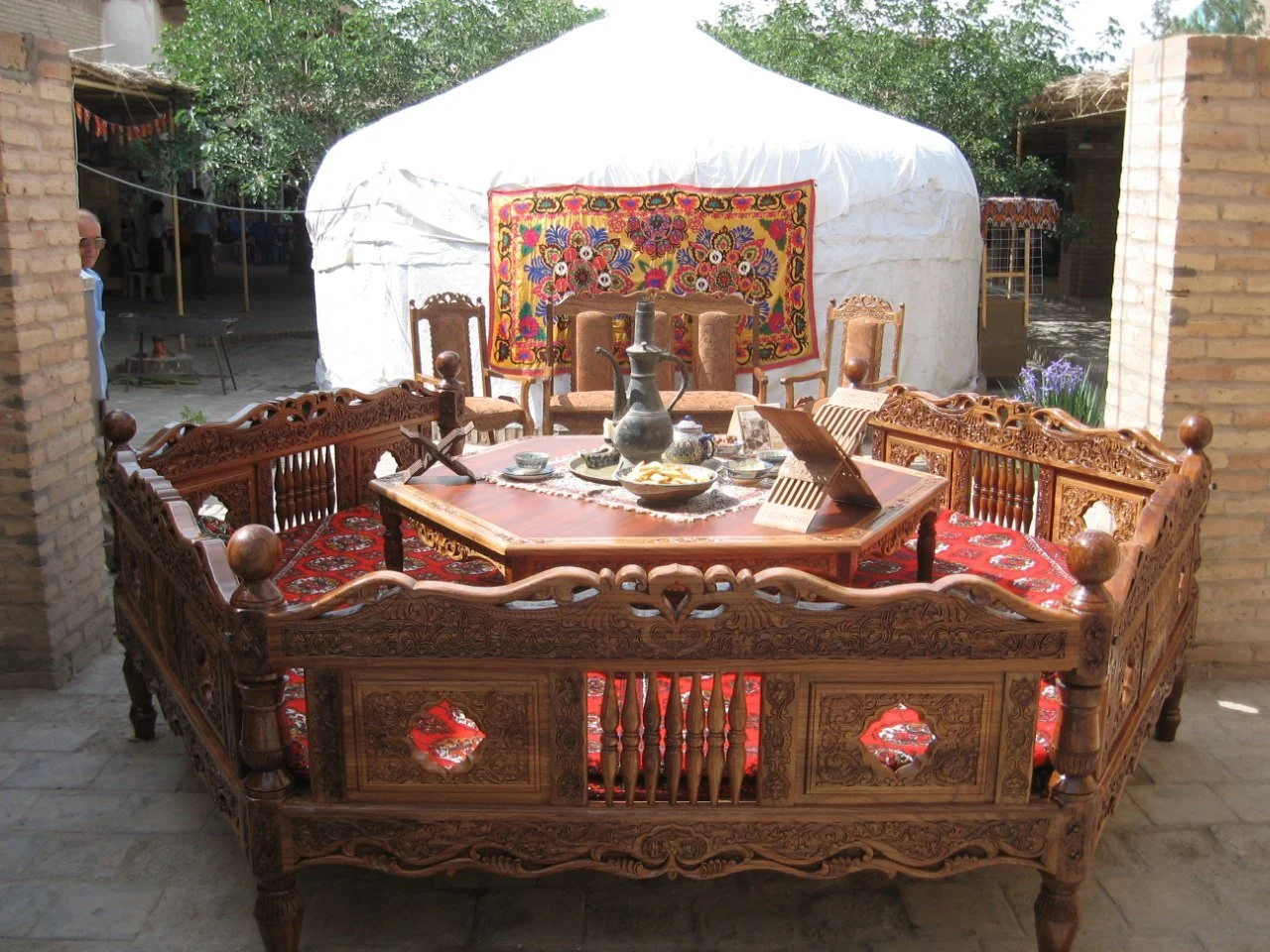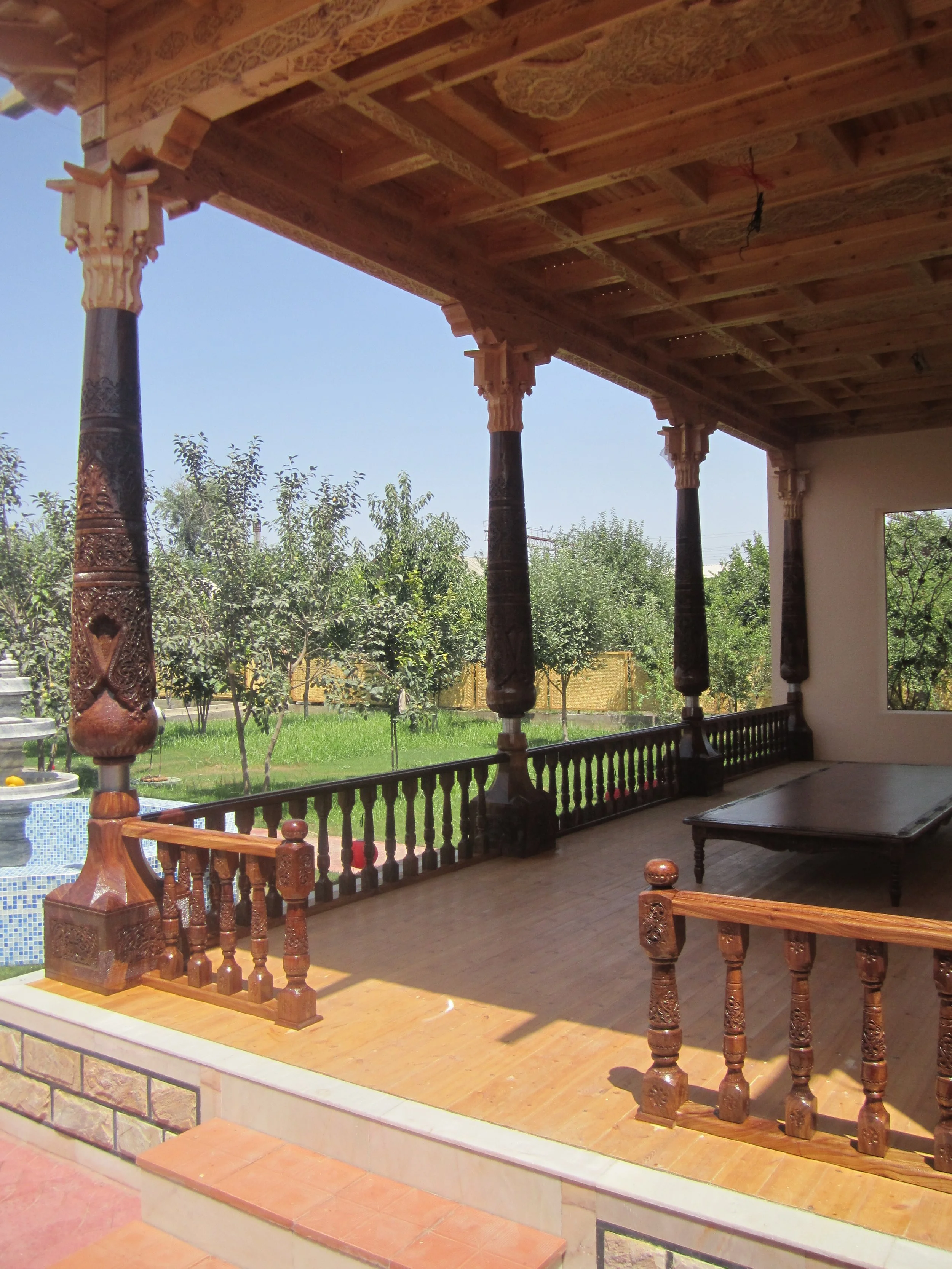Woodcarving in Uzbekistan
Text by Muzayyana Urinboyeva
Woodcarving is part of Central Asia’s artistic heritage. In ancient times, wood was considered a rare and valuable material in this arid region. In the hands of skilful craftsmen, it was carved into exquisite ornaments. In this article, we meet Mirjalol Bakhromov, a young and promising woodcarver.
The woodcarving craft is widespread in many regions of Uzbekistan and is carefully handed down from generation to generation. One of the keepers of this ancient tradition is Mirjalol Bakhromov, a third-generation craftsman from Khiva who has been carving for more than 12 years. He developed a love for the craft during childhood, when he was 11 years old. Since then he has created many unique products and trained five students to whom he passed on his experience and trade secrets.
The history of his family’s craftsmanship goes back to his grandfather, Bakhrom Adambaev. He succeeded not only in mastering the craft and developing unique patterns, but also passed on his teachings to more than 100 apprentices, having founded a woodcarving school in Do’st-Alam madrasa in Khiva’s inner city, the Ichan-Kala.
His son Muzaffar Adambaev, Mirjalol’s father, continued Bakhrom’s work and became a mentor to his students, teaching them how to choose the right wood, use tools skilfully and ‘feel’ the material.
“In our family craft, there are specific patterns and ornaments that are unique and distinctive. For example, the leaf with an apple blossom, the cotton flower and the almond flower are decorative elements specific to our dynasty, and we use them in many of our carvings.”
Describing the process of woodcarving, Mirjalol notes that he uses only natural wood in his work, usually sycamore, apricot, walnut or oak, which are durable and easy to work with. To preserve the natural beauty of the wood, the carver uses traditional methods of coating with linseed oil or varnishes prepared from honey. During the carving process, the craftsman uses a set of 22 special tools.
“I draw inspiration primarily from nature – from trees created by nature itself, imagining how they could be turned into a sophisticated work of art.
I am also inspired by ancient historical buildings and the culture reflected in them. All this gives me the strength and energy to create. My inner feelings and moods also play an important role and influence my work.”
Despite the growing popularity of carved wooden items as souvenirs and works of art, the master notes that he faces various challenges: finding quality wood, declining interest in traditional crafts among the younger generation, and automation. Nevertheless, Mirjalol is optimistic about the future, saying that the careful introduction of certain technologies can breathe new life into his ancient craft.
Here is his advice to aspiring artisans:
‘If you love this craft and are willing to be patient and always put beauty first, you can master it.’

